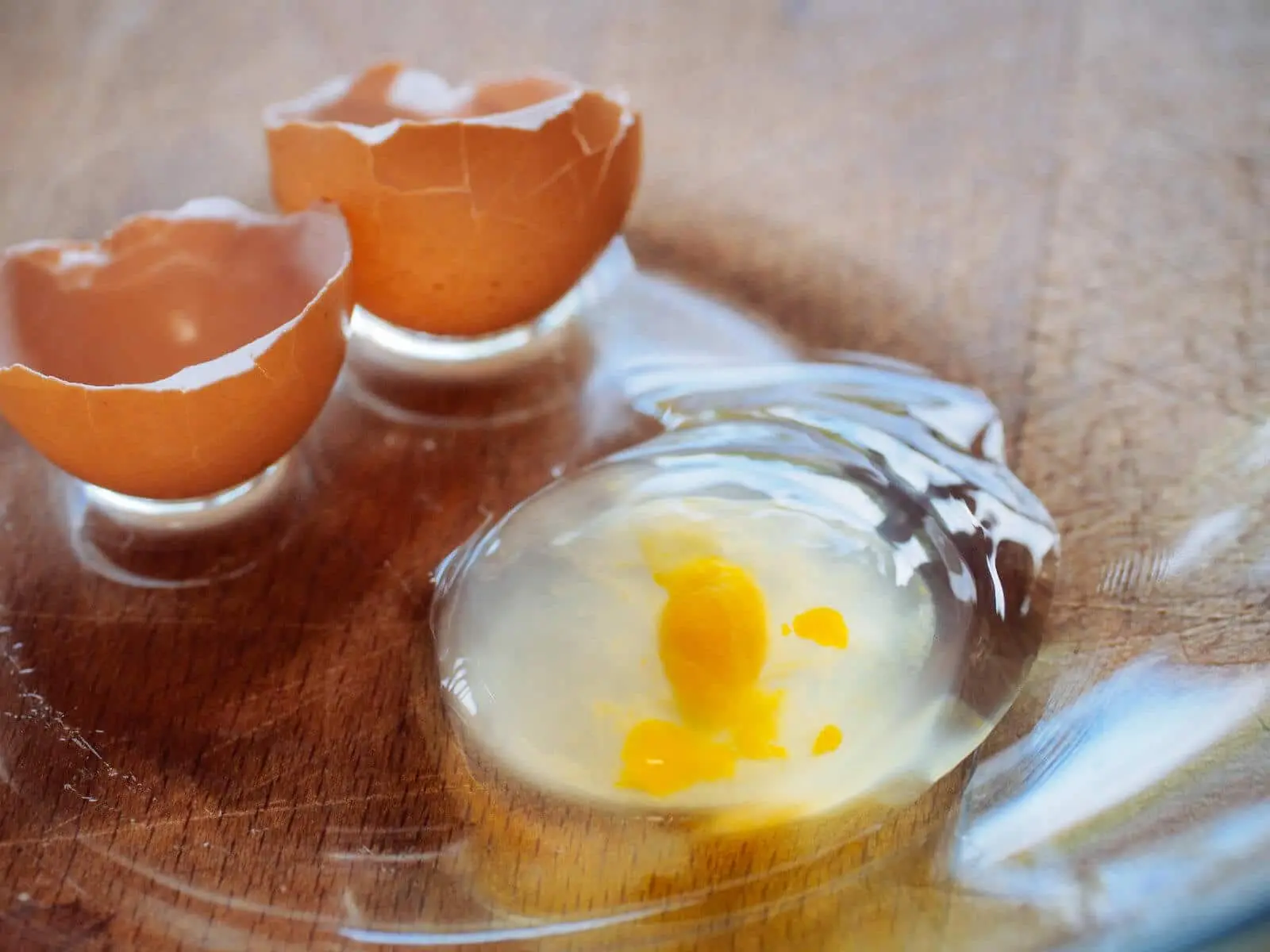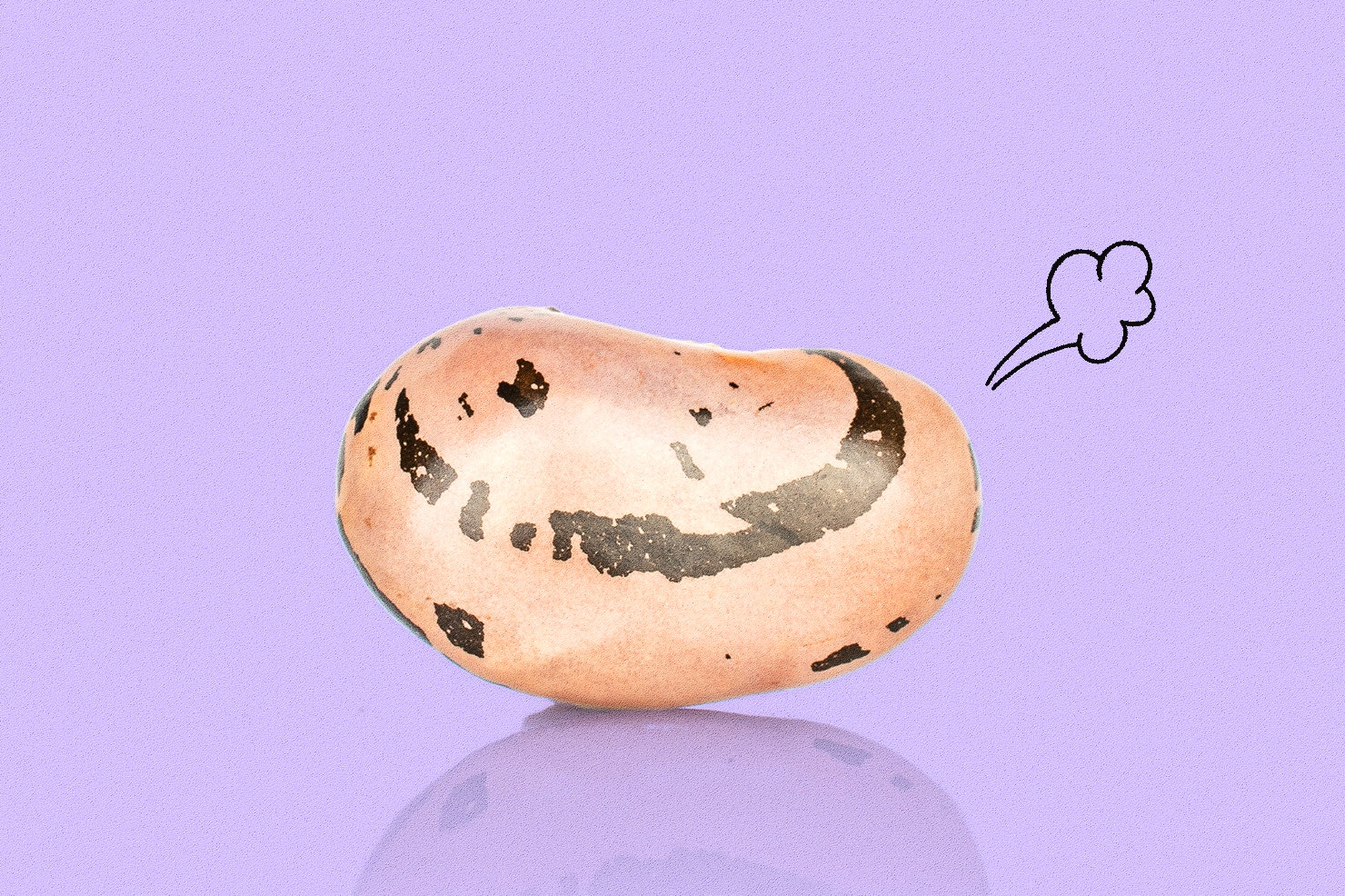

FAQs
What Is A Fart Egg
Modified: August 5, 2023
Discover the answer to the popular question "What is a fart egg?" and learn more about general questions in this comprehensive guide.
(Many of the links in this article redirect to a specific reviewed product. Your purchase of these products through affiliate links helps to generate commission for Under-tec.com, at no extra cost. Learn more)
Table of Contents
Introduction
Have you ever heard of a “fart egg”? It may sound like a humorous term, but it is actually a fascinating phenomenon that occurs in the world of poultry. Fart eggs, also known as fairy eggs or wind eggs, are small eggs that are sometimes laid by chickens. Despite their unusual name, fart eggs are not a joke but rather a natural occurrence with a scientific explanation. In this article, we will explore the intricacies of fart eggs, including how they are formed, their characteristics, and their significance in poultry farming.
A fart egg is essentially a miniature egg that lacks a yolk. It is usually about the size of a marble or even smaller. Unlike normal eggs, fart eggs are formed without the usual development of a fully mature yolk within the hen’s reproductive system. This phenomenon can leave people wondering how such an odd occurrence can happen.
The formation of fart eggs is believed to be a result of an error in the hen’s reproductive cycle. In a typical egg-laying process, a mature yolk is released from the ovary and travels down the oviduct, where it is fertilized by sperm if the hen has mated. The fertilized yolk then develops into an egg, including the formation of the egg white and shell. However, in the case of a fart egg, the reproductive cycle may get disrupted, resulting in the production of an egg without a yolk.
The factors that can influence the formation of fart eggs are still not fully understood. Some experts speculate that stress, hormonal imbalances, or other disruptions to the hen’s reproductive system could play a role. Additionally, young pullets who have just started laying eggs are more likely to produce fart eggs as their reproductive systems are not fully matured. However, the specific triggers for fart egg production remain a subject of ongoing research.
When it comes to the characteristics of fart eggs, they can vary in appearance. The shell of a fart egg is usually thinner and more fragile compared to that of a normal egg. Fart eggs can come in various colors, including shades of white, brown, or even tinted hues. Despite their small size, fart eggs typically have a shell that is intact and complete, just like a regular egg, although they lack the yolk contained within.
Definition of a Fart Egg
Before delving into the complexities of fart eggs, let’s start with a simple definition. A fart egg, also known as a fairy egg or wind egg, is a small-sized egg laid by chickens without a fully formed yolk. It is a curious phenomenon that occurs sporadically in the world of poultry.
Typically, an egg produced by a chicken contains a yolk, which is a vital component of the reproductive process. Within the hen’s reproductive system, a mature yolk is released from the ovary and travels down the oviduct. If the hen has mated with a rooster, the yolk may be fertilized by sperm, leading to the development of an embryo and the formation of a fully formed egg. However, in the case of a fart egg, the usual process is disrupted, resulting in the production of an egg without a fully developed yolk.
Despite the name “fart egg,” it is important to note that the egg itself does not contain any gas or flatulence. The term “fart” in this context refers to a mere description of the smaller size and unusual nature of the egg.
Fart eggs are often smaller in size compared to normal eggs, typically measuring around the size of a marble or even smaller. They can vary in color, ranging from shades of white, brown, to even tinted hues. Despite lacking a fully formed yolk, fart eggs generally have a complete and intact shell, similar to that of a regular egg.
It is worth mentioning that the term “fart egg” is a colloquial and informal term used among poultry enthusiasts and farmers. In scientific literature, the phenomenon is referred to as “fairy eggs” or “wind eggs,” reflecting the small and peculiar nature of these eggs.
Now that we have a clear understanding of what a fart egg is, let’s explore how these unique eggs are formed and the factors that can influence their production.
How Fart Eggs Are Formed
The formation of fart eggs, or fairy eggs, can be attributed to a disruption in the hen’s reproductive process. In the normal egg-laying process, a mature yolk is released from the ovary and travels down the oviduct, where it is fertilized by sperm if the hen has mated. The fertilized yolk then undergoes a series of transformations, including the development of the egg white and the formation of the eggshell, resulting in a fully formed egg.
However, in the case of fart eggs, something goes awry in this process. It is believed that a disruption or error occurs during the development of the yolk within the hen. Instead of a fully developed yolk, a smaller, incomplete yolk is released into the oviduct. As this underdeveloped yolk continues along the reproductive tract, the egg white and shell still form around it, resulting in the production of a fart egg.
The specific mechanisms behind why this disruption occurs are not yet fully understood. Some experts speculate that stress or hormonal imbalances can influence the hen’s reproductive system and lead to the production of fart eggs. Young hens that have recently started laying eggs, known as pullets, are more prone to producing fart eggs as their reproductive systems are still maturing.
It is important to note that the occasional production of a fart egg is relatively common among laying hens. However, the majority of eggs laid by hens are fully formed with a proper yolk. Fart eggs are considered a natural variation and should not be a cause for concern among poultry keepers.
Next, we will explore the factors that can influence the production of fart eggs in more detail, shedding light on the intriguing relationship between hen biology and the formation of these unique eggs.
Factors that Influence Fart Egg Formation
While the exact causes of fart egg formation are not fully understood, several factors have been suggested to influence the production of these small, yolk-less eggs.
1. Hormonal Imbalances: Hormonal imbalances in hens can disrupt the normal development and release of eggs. Fluctuations in hormone levels can lead to irregularities in the maturation of the yolk, resulting in the production of fart eggs.
2. Youth and Immaturity: Young pullets who have recently started laying eggs are more likely to produce fart eggs. This is because their reproductive systems are still maturing and may not be fully developed or regulated during the initial stages of egg-laying.
3. Stress: Stress can have a significant impact on a hen’s reproductive system. Factors such as overcrowding, predator threats, changes in diet, or disruptions in routine can induce stress in hens. This stress can result in irregularities in egg production, potentially leading to the formation of fart eggs.
4. Nutritional Deficiencies: A lack of essential nutrients in a hen’s diet can affect the overall health and functioning of her reproductive system. Insufficient calcium levels, for example, can lead to thin or fragile shells, increasing the chances of producing fart eggs.
5. Genetics: Some breeds of chickens may have a higher predisposition to producing fart eggs. Certain genetic traits or breeding characteristics can influence the reproductive processes in hens, increasing the likelihood of fart egg formation.
It is important to note that these factors are not definitive causes of fart egg formation but rather potential influences. Every hen is unique, and the combination of various factors can contribute to the production of fart eggs in different individuals. Additionally, the frequency of fart egg production can vary greatly from hen to hen. Some may only produce a few fart eggs throughout their laying cycle, while others may produce them more frequently.
Understanding the factors that can influence fart egg formation provides valuable insights into the complex interplay between genetics, environment, and hen biology. With this knowledge, poultry keepers can ensure optimal conditions and care for their hens, minimizing potential stressors and promoting healthy egg production.
Now, let’s explore the characteristics of fart eggs in more detail to better understand how they differ from normal eggs.
Characteristics of Fart Eggs
Fart eggs, or fairy eggs, exhibit distinct characteristics that set them apart from regular eggs. While they may vary in appearance, there are some common features that define fart eggs:
Size: Fart eggs are notably smaller in size compared to regular eggs. They are often about the size of a marble or even smaller. This is due to the lack of a fully developed yolk within the egg.
Shell: Despite their smaller size, fart eggs typically have a complete and intact shell, similar to regular eggs. However, the shell of a fart egg is often thinner and more fragile compared to that of a normal egg. It may require careful handling to prevent cracking or breaking.
Color: Fart eggs can come in various colors, including shades of white, brown, or even tinted hues. The coloration of the shell is determined by the breed of the chicken and is unrelated to the absence of a yolk in the egg.
Weight: Due to the absence of a yolk, fart eggs generally weigh less than regular eggs. This reduced weight adds to their unique characteristics.
While the lack of a yolk and smaller size may make fart eggs seem abnormal, it is important to remember that they are a natural variation in the egg-laying process. Fart eggs should be treated with the same care and caution as regular eggs, despite their differences.
Now that we have explored the characteristics of fart eggs, let’s dive deeper into the scientific explanation behind the formation of these intriguing eggs.
How Fart Eggs Differ from Normal Eggs
Fart eggs, also known as fairy eggs or wind eggs, exhibit several distinct differences when compared to normal eggs. These differences lie in their size, yolk composition, and overall appearance.
Size: Fart eggs are significantly smaller in size compared to regular eggs. They are often about the size of a marble or even smaller. In contrast, normal eggs range in size depending on the breed of the chicken and can be as small as bantam eggs or as large as jumbo-sized eggs.
Yolk Composition: The absence of a fully developed yolk is the most significant difference between fart eggs and normal eggs. Fart eggs contain little to no yolk, which is typically the nutrient-rich part of the egg that provides nourishment for the developing embryo. Without a yolk, fart eggs lack the essential proteins, fats, and vitamins found in regular eggs.
Shell: The shell of a fart egg is usually intact and complete, just like a regular egg. However, the shell of a fart egg may be thinner and more fragile compared to that of a normal egg. This thinner shell is due to the reduced size and absence of a yolk inside.
Color: The color of a fart egg’s shell varies and can be similar to the color range of normal eggs. Fart eggs can come in shades of white, brown, or even tinted hues, depending on the breed of the chicken laying the egg.
While fart eggs may differ from normal eggs in terms of size, yolk composition, and shell thickness, it is important to note that they are a natural occurrence and relatively uncommon. Most eggs laid by hens contain a fully formed yolk and are larger in size.
The scientific explanation for the formation of fart eggs lies in disruptions or errors in the hen’s reproductive process, leading to the release of an underdeveloped yolk that subsequently forms into a fart egg. The specific triggers for these disruptions are still not fully understood and remain the subject of ongoing research.
Next, let’s explore the scientific explanation behind the formation of fart eggs, shedding light on the peculiar phenomenon from a biological standpoint.
The Scientific Explanation behind Fart Eggs
The formation of fart eggs, or fairy eggs, can be explained through the study of a hen’s reproductive system and the processes involved in egg development. While the exact mechanisms behind fart egg formation are still not fully understood, scientists have identified some key factors that contribute to this phenomenon.
One theory suggests that the production of fart eggs is a result of a disruption or error in the hen’s reproductive cycle. Normally, a mature yolk is released from the ovary and travels down the oviduct, where it is fertilized by sperm if the hen has mated. As the yolk progresses through the oviduct, it undergoes various transformations, including the development of the egg white and the formation of the eggshell.
In the case of fart eggs, it is believed that a disruption occurs during the development of the yolk. Instead of a fully developed yolk being released, a smaller, incomplete yolk is released into the oviduct. As this underdeveloped yolk progresses through the oviduct, the egg white and shell still form around it, resulting in the production of a fart egg.
The specific triggers for this disruption are not yet known. However, factors such as stress, hormonal imbalances, and the immaturity of the hen’s reproductive system have been suggested to play a role in the formation of fart eggs. Young pullets who have recently started laying eggs are more prone to producing fart eggs as their reproductive systems are still maturing.
Furthermore, nutritional deficiencies in a hen’s diet can also contribute to the occurrence of fart eggs. Insufficient levels of calcium, for example, can result in thin or fragile shells, increasing the likelihood of producing fart eggs. Therefore, providing a well-balanced, nutrient-rich diet to hens is essential for proper egg production.
Fart eggs are considered a natural variation in the egg-laying process and are relatively uncommon compared to regular eggs. While they may seem unusual, they are a testament to the intricacies of nature and the complex biological processes involved in hen reproduction.
Now that we understand the scientific explanation behind fart eggs, let’s explore their significance in the context of poultry farming.
Fart Eggs in Poultry Farming
In the realm of poultry farming, fart eggs are an intriguing but relatively minor occurrence. While they may not have significant consequences for the overall productivity of a flock, understanding their occurrence and implications is valuable for poultry farmers.
One important aspect to note is that the occasional production of fart eggs in a hen’s laying cycle is considered normal. It is not indicative of any health issues or deficiencies. Fart eggs are a natural variation that can be attributed to disruptions or errors in the hen’s reproductive process.
For poultry farmers, the production of fart eggs serves as a reminder to closely monitor the health and well-being of their hens. This involves providing a balanced and nutritious diet, ensuring proper environmental conditions, and minimizing stress factors within the flock.
When collecting eggs from commercial operations or hobby farms, it is essential to distinguish fart eggs from regular eggs. Fart eggs can be smaller in size and have thinner shells, but they should still be handled with care to avoid breakage. Proper identification and sorting can prevent unwanted mishaps during the egg packaging and distribution process.
From a marketing standpoint, the presence of fart eggs can provide a unique selling point for specialty eggs. Some consumers may find the novelty of fart eggs intriguing and be interested in purchasing them for educational or novelty purposes. However, it is crucial to maintain transparency and clearly label fart eggs as such to avoid misleading consumers.
Fart eggs have also piqued the interest of poultry enthusiasts and collectors. Some individuals enjoy adding unique eggs to their collections, and fart eggs can certainly fit into this category. Their rarity and unusual nature make them sought-after by those with a keen fascination for the diverse and peculiar world of eggs.
While fart eggs may not have significant implications for commercial egg production, they remain an interesting and natural phenomenon in the world of poultry farming. By understanding their occurrence and considering their potential applications, poultry farmers can appreciate the intricacies of hen biology while effectively managing their flocks.
Now, let’s wrap up this article by summarizing the key points discussed and reflecting on the fascinating phenomenon of fart eggs.
Conclusion
Fart eggs, also known as fairy eggs or wind eggs, are a peculiar and fascinating phenomenon in the world of poultry. These small eggs, lacking a fully developed yolk, are formed due to disruptions or errors in the hen’s reproductive process. While the exact triggers for fart egg formation are still under investigation, factors such as hormonal imbalances, stress, immaturity, and nutritional deficiencies have been suggested to play a role.
Despite their unusual name, fart eggs are a natural variation in the egg-laying process and are relatively uncommon compared to regular eggs. They exhibit distinct characteristics, including smaller sizes, thinner shells, and the absence of a fully developed yolk. Understanding these differences is helpful for poultry farmers in managing their flocks and properly identifying and handling fart eggs.
While fart eggs may not have significant implications for commercial egg production, they can serve as a source of intrigue and fascination for poultry enthusiasts and collectors. Their rarity and distinctiveness make them sought-after for educational and novelty purposes.
By gaining insights into the scientific explanation behind fart eggs and their significance in poultry farming, we can appreciate the intricate nature of hen biology and the marvels of the natural world.
So, the next time you come across a fart egg, remember that it’s not a joke but rather a unique and natural phenomenon in the fascinating realm of poultry.










